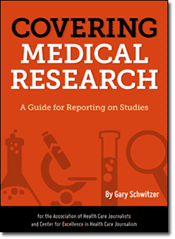Tag
indiana
-
Reporter finds causes of infant mortality in Indiana are complex
Giles Bruce, who covers health for the Times of Northwest Indiana, did deep reporting into infant mortality in Indiana, work…

-
•
New report raises concerns about Indiana dental chains
A new federal report raises questions about the billing practices of nearly 100 Indiana Medicaid dentists, as well as the…

-
•
Ind. parents ‘abandon’ children so they can get mental health care
Reporting for The Times of Northwest Indiana, Marisa Kwiatkowski found that Indiana’s child mental health services are so lacking that,…

-
•
Researchers surprised by concussion study
Writing for Sports Illustrated, David Epstein tells the story of a small-scale Indiana football concussion study in which in which…

-
•
Indiana numbers show preventable errors down
The Indianapolis Star‘s Daniel Lee reports that, according to the state’s newly released 2009 numbers, preventable medical errors are down…

-
•
Ind. TV station uncovers underground ‘dentist’
Bob Segall of WHTR-Indianapolis chronicles the results of an investigation in which the station uncovered a “dentist” who has been…




